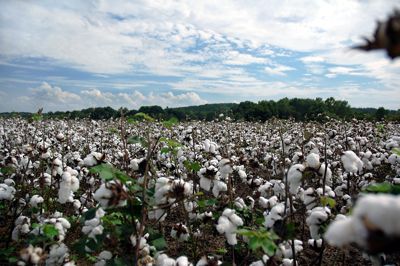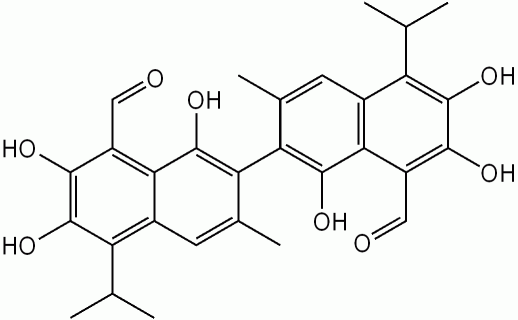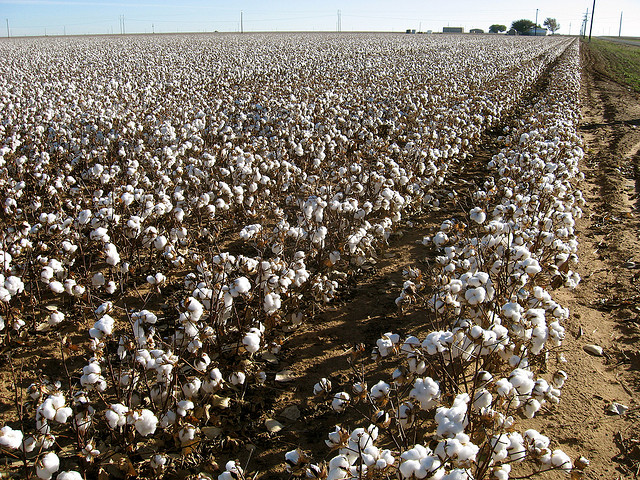More than eight years ago, we wrote about a project at Texas A&M University led by Dr. Keerti Rathore to create edible cottonseed. If determined to be safe for food and the environment, this has the potential to make large amounts of protein and calories available that would normally be locked up in the seed. This trait is undergoing deregulation with USDA-APHIS right now, and we encourage our readers to submit comments before the deadline at the end of the day today.
Background
Cotton plants produce a potent defense compound called gossypol, which is toxic to many animals, including humans. Gossypol is produced by special glands throughout the plant, from leaves to seeds, and protects the plants from insect pests and diseases. Some varieties of cotton are glandless and do not produce toxic levels of gossypol, making the seeds and leaves edible. However, because these glandless cotton varieties have lost the protective benefits in their leaves, they are more susceptible to insect damage and are not commonly grown.
Using RNAi, Dr. Rathore’s team at TAMU created a variety they call TAM66274 that “silences” the production of gossypol just in the seeds, producing a plant that defends itself against pests in the leaves, but produces seeds that have ultra-low levels of gossypol in the seeds, making them safe to eat. If applied on a large scale, it could allow humans and many other animals access to the protein contained in cottonseed. According to the data they collected for their application, the composition of the cottonseed was otherwise unchanged, the plants performed the same in the field, and there were very minor changes in the length of the fibers, which they suggest will not be an issue when the trait is bred into “elite” cotton varieties.
The impacts of this trait could be far-reaching. Some estimates suggest that the amount of protein produced in cottonseed worldwide could satisfy the needs of 500 million people. Ruminant animals are able to tolerate some gossypol in their diets, so this trait could create greater flexibility in the animal feed supply. This would turn cottonseed into a valuable co-product of cotton production that could benefit cotton farmers at every scale, producing more food without using more land. Read more about how this trait works and its potential impacts on agriculture in Cotton like Candy.
What APHIS wants to hear from you
Open comment periods for federal regulations are often misunderstood. Some organizations use them to gather signatures (and email addresses) of supporters for their political causes, or set up form letters to mass-send the same talking points over and over to regulators. These actually do nothing more than single letters from one person that say the same thing – because the regulators are looking for public input to identify issues that they should look into during the process – not to count the number of people who think one action or another is a good idea. Back when the FDA was looking for input on biotechnology outreach, there were many opponents and supporters of biotechnology saying “don’t do it” and “do it”, when that was not even a question. It was mandated by Congress, so the question was how should it be done?
Similarly, when the USDA-APHIS is reviewing a genetically engineered crop, they are not going to count how many people say “yes” or “no” to the question of whether to de-regulate (approve) a crop, they want to know what issues related to the economic and environmental impacts they should be aware of when they do the review. Will the crop become a pest on farms? Will it help control pests? Will it benefit the bottom lines of farmers, or reduce the ability of other farmers to farm the way they want to? This is your chance as members of the public, as knowledgeable scientists and science enthusiasts, and as people who think deeply about far-reaching impacts of biotechnological applications, to inform the USDA about data, ideas, and concerns that you have that they can look into when evaluating the crop.
Here it is in their words:
We are advising the public that the Animal and Plant Health Inspection Service has received a petition from Texas A&M AgriLife Research seeking a determination of nonregulated status of cotton designated as event TAM66274, which has been genetically engineered for ultra-low gossypol levels in the cottonseed. The petition has been submitted in accordance with our regulations concerning the introduction of certain genetically engineered organisms and products. We are making the Texas A&M AgriLife Research petition available for review and comment to help us identify potential environmental and interrelated economic issues and impacts that the Animal and Plant Health Inspection Service may determine should be considered in our evaluation of the petition.
Comments are due today at midnight Eastern Time. Since there is not much time left to comment, you can keep your comments brief, but if you have input to give our regulators, please do! There are only 39 comments showing at the time of writing, so you could have an impact. Take a look at the documents prepared by the TAMU research team, and tell the USDA-APHIS what you think. Join me in submitting a public comment on low-gossypol cotton!
We will be following this trait as it moves along, while thinking about how we can improve our own alerts to help mobilize scientists, farmers, and the rest of you to prepare impactful submissions that can help strengthen the regulatory process.







